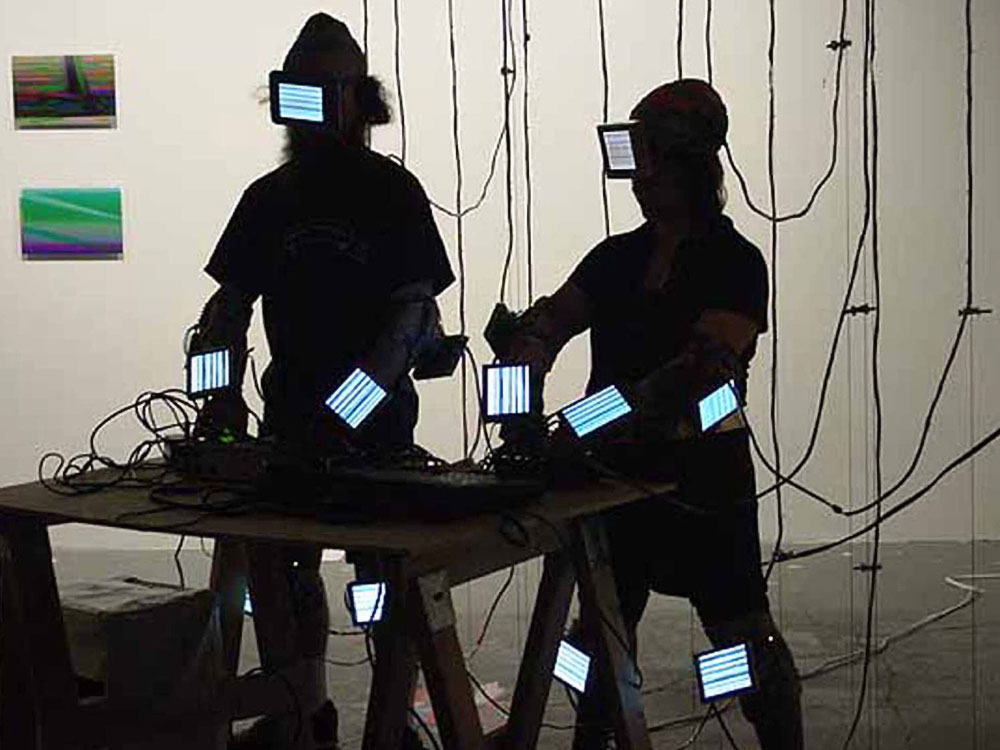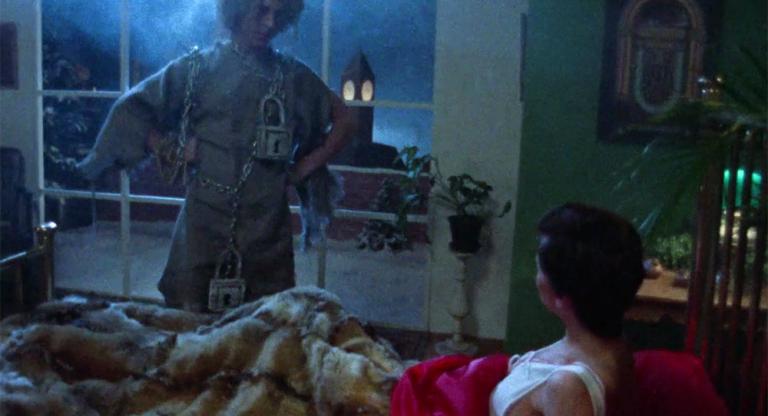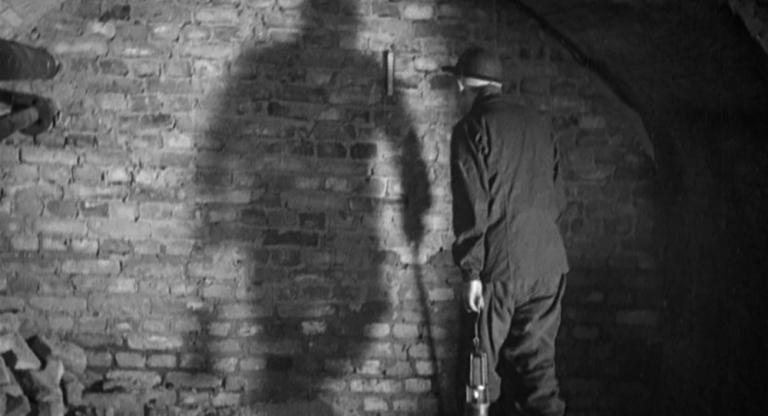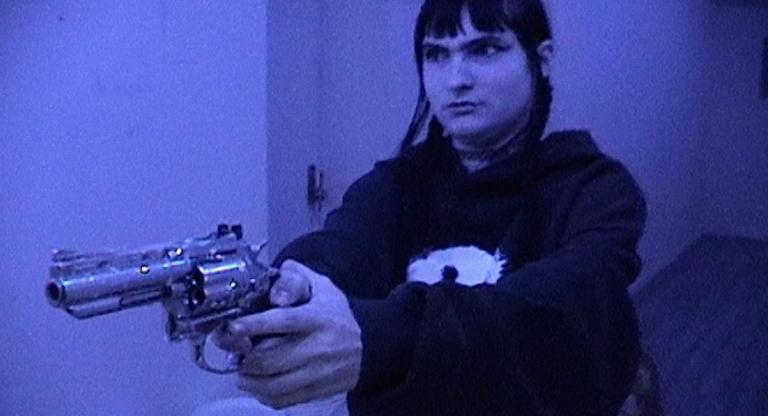LoVid, the artist duo Tali Hinkis and Kyle Lapidus, have demonstrated an ongoing interest in the interdependence of natural and technological systems throughout their career. Their latest exhibition, Mycotechnology: The Work of Wires in the Age of Secondary Decomposition, presents the pair’s photographic documentation of their 2003 piece Video Wear. In 2022, LoVid discovered that the film had been degraded by water and mold. The show displays this series of images: with eroded film gelatin, abstracted image fragments, and sprawling rhizomatic webs of discoloration.
In their collaborative experiments since 2000, LoVid has continually merged audiovisual synthesis with textiles, using wearables to explore emergent technologies’ entanglements with the human body, and referencing the historic relationship between textile production and computational processes. This show presents colorful, close-up photographs of the performers wearing 14 synchronized 5.6” LCD screens with full-range speakers that are connected via protective clothing—knee pads, arm bands, caps—and long stretches of cables. The garments are hand-sewn patchworks of fabric printed with LoVid’s video stills. They conceived of the garb as an exoskeleton for a future in which screens and wires have merged with the human body.
An approximately 10-second clip of a 2003 performance of Video Wear (pictured above) loops in the corner of Various/Artists, complemented by reverberant newsreel audio from Victoria Keddie’s Drift Choir (2025) in the adjoining room. The screen displaying the work is small and its images pixelated in stark contrast to the scale and visual density of the nearby prints. Like the mold degrading the photographs on the wall, contemporary expectations of image quality—now trained on crisp 4K resolutions—play an agential, if chaotic, role in the aesthetic impact of these artworks from a prior era. LoVid’s futurism is qualified by their penchant for visibly handmade aesthetics, refuting the Silicon Valley promise that technology will only become smoother, smaller, and faster with time, rather than more in-tune with the materials of its own production. That also means LoVid’s vision of future technology is more vulnerable to organic decay.
The oft-misunderstood materiality of born-digital artworks, contingent upon the computers, memory chips, and coding languages which sustain them, poses unique challenges and opportunities for these pieces’ stewards. It is precisely this entangled, embedded materiality that calls us to think of preservation as more than the physical maintenance of artworks, encompassing their distribution, thoughtful presentation, and ongoing contextualization within shifting cultural consciousness. To this end, Mycotechnology’s subject is the transformation of LoVid’s work over time: a scene comprehending the evolution of an artist’s career in the face of immense cultural, personal, and technological upheaval.
LoVid | Mycotechnology: The Work of Wires in the Age of Secondary Decomposition is on view through May 30 at Various/Artists.



